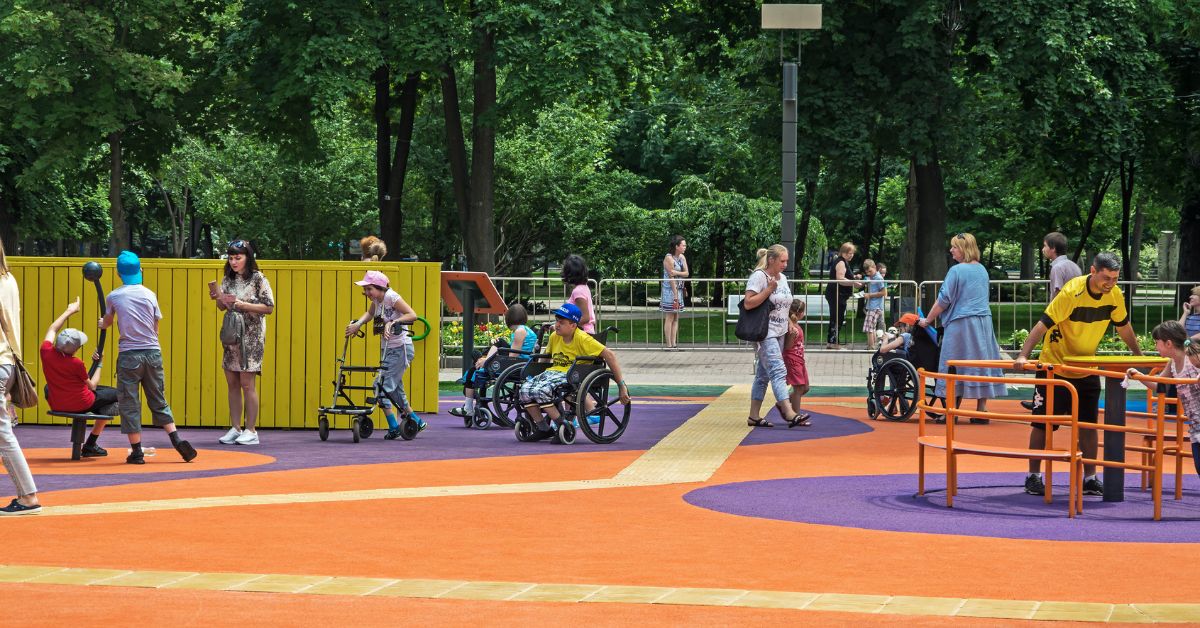
Playgrounds are more than just places for children to burn off energy; they are pivotal spaces for social interaction, physical activity, and cognitive development. But traditional playgrounds aren’t always designed to accommodate everyone. Inclusive playgrounds address this gap by offering accessible and engaging spaces where children of all abilities can play together. These environments go beyond basic ramps and slides, incorporating features and equipment that cater to a wide range of physical, sensory, and cognitive needs. By doing so, they help reduce barriers, promote understanding, and nurture a more inclusive society.
Children naturally learn through play. From problem-solving to communication skills, the playground is an arena where lessons about empathy, cooperation, and resilience are absorbed with every game and activity. When a playground is inclusive, it ensures that children with disabilities or different needs are not sidelined. Instead, these children can participate fully, benefiting just as much as their peers from the vital developmental opportunities that play provides. This blog will explore why inclusive playgrounds are important, the key features that make them truly accessible, and the far-reaching benefits they offer to communities and schools.
Inclusive playgrounds differ from standard play areas because they are specifically designed to accommodate varying levels of mobility, perception, and cognitive function. While exact features can vary, several core elements often define an inclusive space.
By combining these features into a cohesive design, inclusive playgrounds create a welcoming environment where every child can participate. The result is an enriched social and developmental space that encourages children to play, learn, and grow together.
The value of inclusive playgrounds extends far beyond just meeting accessibility standards. They create an environment where children of all abilities can engage, interact, and learn from each other. Here’s a closer look at some of the key benefits.
When children with different abilities share a playground, they learn to understand and respect one another’s strengths and limitations. This exposure to diversity at an early age helps cultivate empathy and compassion. Children learn that everyone has unique ways of communicating and playing, which can significantly reduce social stigma and bullying.
Playgrounds serve as real-world “classrooms” that challenge motor skills, spatial reasoning, problem-solving, and communication. Inclusive equipment—like adaptive swings and multi-sensory panels—encourages children to engage in tasks that push their cognitive and physical boundaries. The repetitive and fun nature of play also helps children with mobility or sensory challenges develop coordination, balance, and endurance in a low-pressure environment.
Being able to participate actively in group play boosts children’s self-esteem. For a child who uses a wheelchair, for instance, discovering that they can reach the top of a ramp to join peers on the slide fosters a sense of achievement. As children master new activities, they develop confidence and become more willing to try other challenges, both on the playground and in their daily lives.
Inclusive playgrounds often feature games and activities that naturally require collaboration—like seesaws that work best with two people or interactive panels where multiple kids can contribute. This setting encourages teamwork and communication, as children learn to work together regardless of ability differences.
The playground is a safe space where children can express themselves freely. Kids can channel pent-up energy, relieve stress through physical movement, and build friendships in a relaxed setting. This is especially beneficial for children with anxiety or sensory processing disorders, as inclusive playgrounds often include quiet, calming areas where kids can self-regulate.
Inclusive playgrounds do more than serve children. They stand as a testament to a community’s commitment to equality, accessibility, and overall wellbeing. For schools and local councils, prioritising inclusive play areas can yield significant benefits.
Playgrounds are communal spaces that bring families together. When these spaces are inclusive, parents and children from different backgrounds, including those with special needs, feel equally welcomed. Over time, this inclusive ethos fosters greater social cohesion and mutual respect among community members.
Many schools increasingly recognise the link between physical activity, social interaction, and educational achievement. By installing inclusive playgrounds on campus, schools can provide all students with the chance to engage in active, collaborative play. This, in turn, can lead to better concentration, improved social skills, and a more positive school environment.
Australia has various regulations related to disability access (such as the Disability Discrimination Act), and it’s important for public spaces to comply. Investing in inclusive playgrounds helps schools and councils meet these legal obligations. Beyond compliance, it projects a forward-thinking image, showing a genuine commitment to serving the entire community.
Inclusive public facilities enhance a region’s reputation for being family-friendly and forward-thinking. Visitors and tourists are more likely to return or recommend a community that offers accessible recreation options. This can have a subtle yet positive impact on local businesses, tourism, and the overall economic landscape.
When a council invests in inclusive infrastructure, it sends a clear message: diversity matters. Children growing up in such an environment learn from a young age that people of all abilities, backgrounds, and ages are valued and respected. Over time, this lays the foundation for a more inclusive and empathetic society.
Why are inclusive playgrounds important? They serve as vital spaces where children of all abilities can come together, interact, and learn in a supportive, engaging environment. Key features like ramps, sensory panels, and adaptive equipment ensure that everyone—from a child using a wheelchair to one with sensory sensitivities—can participate in the joy of play. This inclusivity not only enhances motor and cognitive development but also fosters empathy, social skills, and a sense of belonging in the community.
For schools and councils, prioritising inclusive playgrounds goes beyond legal compliance; it enriches community ties, supports educational outcomes, and demonstrates a commitment to welcoming all residents. The long-term impact is profound: children who grow up playing in inclusive spaces often become adults who appreciate diversity, advocate for equal opportunities, and work toward a more inclusive society. By investing in inclusive playgrounds today, we’re building stronger, kinder communities for tomorrow.